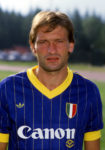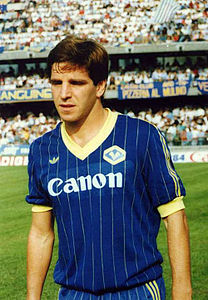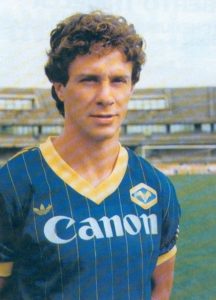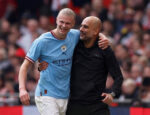With the 2020–2021 Serie A underway, there is a general sense of uncertainty about a league that has fallen from the heights of its glory in the 1990s. Juventus are looking to make it an even 10 Scudetti in a row, yet with a new, untested manager in Andrea Pirlo, a new midfield, and arguably less star quality than they have had since their unbeaten title in 2011–2012 they are facing more questions about their ability to sustain a title challenge while also competing in a European front.
Most of these questions are coming from a chasing pack that collectively looks much stronger than any top-flight season Italy has seen in the last decade. Over the last few years in Italy, several household names have been building for the chance to dethrone the Turin side.
But their sternest challenger might be a Lombardy team that has never won major honors since 1963, when they were crowned Coppa Italia champions. Atalanta capped off a second season in 2019–20 with another Champions League place, their best European finish since 1991, and most importantly without selling any of their key players, with the only departures being the backup wing-back Timothy Castagne and the teenage winger Amad Traore.
Should Atalanta capture the title in 2021, they would become the first “new” title-winners since Sampdoria in 1991. And before Samp in the 1980s, two sides upset an entrenched order in Italy to capture their first Scudetti.
And that’s where we find ourselves today, exploring the unheralded Verona side of 1984/1985.
1985: Something is rotten in the state of fair Verona…
Or so the competing clubs in Italy thought at the end of the 1984/1985 season. In a league full of talented stars such as Michel Platini and Alessandro Altobelli, the Scudetto traveled the banks of the Adige to Julius Caesar’s favorite vacation spot.
The context of the league at the time adds some further spice to this particular shock. In 1980, the scandal of Totonero broke. A Roman restauranteur and his business partner had roped dozens of players, including Italy and Milan icon Enrico Albertosi, into rigging games.
Totonero could be a book on its own, or perhaps a good documentary, but its most relevant consequence were the attempted reforms to the system of Italian referee selection throughout the following decade. In 1984/1985, instead of relying on the traditional designatori arbitrali, the referee assignment council, the Italian league decided to randomly draw referees, allowing no one knowledge of who was going to referee their games.
A Summer of ‘Stranieri’
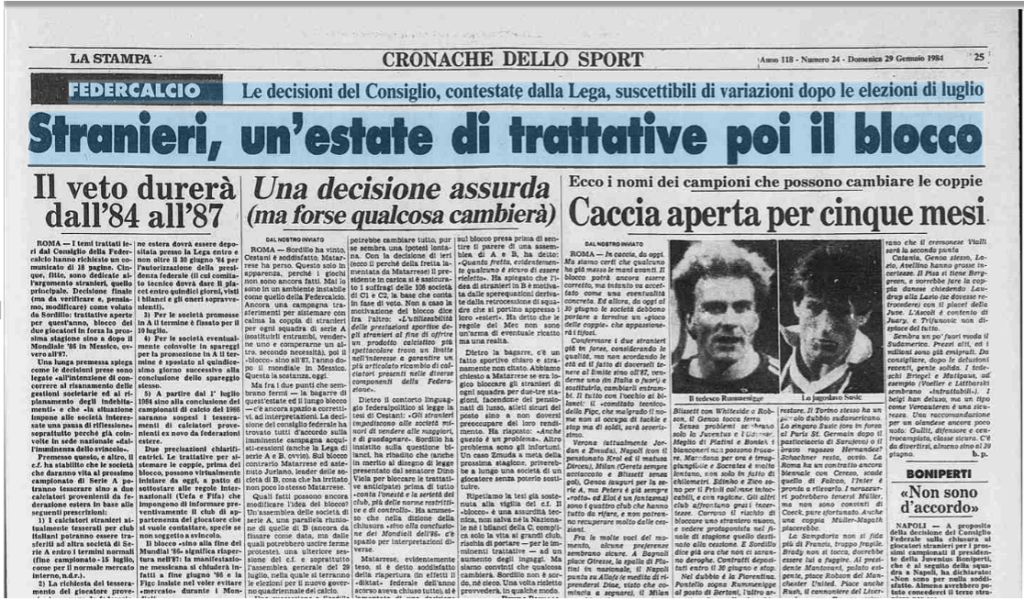
In January of 1984, the Italian league decided to enforce a three-season ban on signing foreign players for all teams except the recent promotions. Therefore, the cream of Italy’s crop decided to invest big on foreign players already in Italy and elsewhere across the world, before the ban went into effect.
Big names were moving: the Scot Graeme Souness, back when Pogba didn’t exist to hate, headed to Sampdoria from Liverpool, the German Karl-Heinz Rummenigge joined Inter from Bayern Munich, and across town in Milan, the English duo of Mark Hateley and Ray Wilkins moved to the red half of the San Siro from Portsmouth and Manchester United respectively. The third Brazilian midfield magician of 1982, Socrates, joined Fiorentina, while his teammate Junior signed for Torino. Oh, and Napoli signed some angry midget from Barcelona — we’ll get to him in a minute.
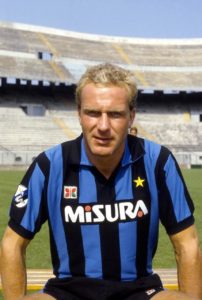
Meet the Outsiders: Hellas Verona A.C.
Verona made moves with the rest of them. It would be wrong to call them an untalented squad — their coach, Osvaldo Bagnoli, brought them to a fourth-place finish and a Coppa Italia final in 1982–1983, although Juventus triumphed over them across two legs. They already had the creative attacker Pietro Fanna and the midfield playmaker Antonio Di Gennaro, spearheaded by the speedy Giuseppe Galderisi. But they were not a household name. Consequently, their signings weren’t on the same level as their competition, investing in the long-jumper-turned-left-back Hans-Peter Briegel of Kaiserslautern and the Danish playboy Preben Elkjær from Lokeren, following his performances at Euro 1984.
The Gialloblu hit the ground running, going 14 matches unbeaten until falling to an Angelo Colombo goal away to Avellino. That brief wobble allowed Inter, one of the two closest challengers, to briefly hold the top spot — until a draw in Verona set Bagnoli’s side back on top. Not even a further defeat to the other challengers Torino could knock Verona from their perch, as they sealed their first ever Scudetto in the following weeks with a draw against none other than Atalanta.
Analysis: Hellas Verona AC vs. SSC Napoli: Matchday 1
Sadly, I was only able to find one full match of this historic Verona team, in their opening day victory over Napoli. While obviously there are going to be distinct differences between today’s football and that of the 1980s, there are some interesting patterns that we can see in Verona’s play, some that actually continue to manifest to this day. Here are four takeaways:
1. The Genius of Di Gennaro
Taking the #10 shirt at a historic Italian club like Fiorentina is never easy. Especially when the current holder of that shirt is Fiorentina icon and World Cup winner Giancarlo Antognoni. That’s why Antonio Di Gennaro, who could never fit into a midfield featuring Antognoni, swapped purple for the yellow and blue of Verona, and a more comfortable #10.
As was common for playmakers in those days, Di Gennaro looks remarkably undisciplined in a positional sense; floating from wing to wing, dropping deeper than the center backs, and charging forward into space to support the attack.
However, throughout the Napoli game, the Florentine showed his preference to begin his attacks from deeper in midfield, in contrast to his opposite number Diego Maradona, who tended to stay in his team’s attacking half.
Di Gennaro also pitched in defensively, making interceptions and tackles to spark quick counterattacks led by the likes of Luciano Marangon, Pietro Fanna, and Luciano Bruni. When Napoli attempted to press him higher in the second half, Di Gennaro countered by playing the fast forwards Giuseppe Galderisi and Pietro Fanna into space with some delicious long passes.
His tendency to play deeper also opened up space ahead of him for Fanna to operate as an advanced creative midfielder, while Bruni and Hans-Peter Briegel also surged into the open areas in the Verona attacking third. That didn’t stop Di Gennaro from doing plenty of attacking himself — the move that resulted in Giuseppe Galderisi’s goal was started and assisted by Verona’s #10, and he added a third goal from a Fanna free-kick.
Oh, and he had some absolutely silky skills:
2. All-Action Briegel
In another universe, Hans-Peter Briegel is a decorated member of Germany’s Olympics athletics team. In this one however, the Rodendach native left athletics behind to become a defensive midfielder and left back, initially at Kaiserslautern before making the jump to Verona. The summer signing made an immediate impact at both ends of the pitch against Napoli.
Briegel was given freedom to rampage forward from his midfield position, and was a beneficiary of the passes from Di Gennaro and Fanna. The corner that led to his opening goal came from a lung-bursting run through the center and a slick through ball for Fanna, who returned the favor moments later with an inch-perfect cross.
Perhaps as important as his goal, however, was his man-marking of Maradona. Bagnoli was no stranger to the threat that the Argentine possessed, so whenever Napoli was in possession, their star signing found himself bullied off the ball by Briegel’s relentless marking. Napoli found themselves forced to go long or to the flanks rather than make their play through Maradona. In the second half, Maradona was able to buy himself more time on the ball by dropping deeper to pick it up, but it greatly reduced his goal threat and saw him resort to set-pieces to chip away at the Venetians.
Briegel’s brilliant form saw him end as Verona’s 2nd-top scorer with 11 goals in all competitions, behind the duo of Galderisi and Elkjær. Sadly, there are no statistics for how many other playmakers “the Rhineland steamroller” flattened en route to his winner’s medal.
3. The best defense is also a good offense
While the back five or back three formations are fairly common throughout Italian football history, Bagnoli’s Verona brought an interesting twist to the position by having his nominal outside center-backs, Luciano Marangon and Roberto Tricella move forwards into attacking positions, while the wide players Domenico Volpati and Pietro Fanna moved inside. In a rather modern take on the wing-back positions, Bagnoli had Fanna stay forwards to serve as a creative influence in the final third, while Volpati tucked in to become another defensive midfielder, protecting the remaining center back Mauro Ferroni and supporting the midfielders Di Gennaro, Briegel and Bruni when they moved forwards.
Marangon, naturally a left-back, pushed particularly up high to support the left-sided striker Elkjær when he moved inside. While he did not make a contribution to the goals or assists against Napoli, he would net two goals during the season. Tricella was less of an attacking influence, mainly due to the presence of Fanna ahead of him, but similarly to modern day center-backs, was tasked with carrying the ball out of defense, or playing long passes upfield when necessary.
4. The Magic Midget and Verona’s Mad Mayor
Standing at roughly five-foot seven-inches, or about one Alexis Sanchez, the then-21-year-old Giuseppe Galderisi did not immediately appear to be in the mold of some of his contemporary forwards, such as Mark Hateley or Alessandro Altobelli. But for Verona, he was more than enough to lead the attack.
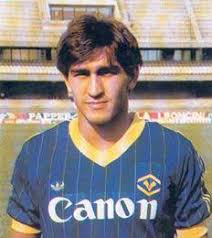
During the early phases of the Napoli game, as both teams probe each other’s weaknesses, Galderisi doesn’t have much to feed on. Consequently, he drops a little deeper than normal to pick up the ball and attempt to win a foul. Galderisi also pops up on the right flank, where he helps support Briegel, Bruni and Fanna in their attempts to combine. His scrappiness off the ball leads to Verona’s 2nd goal; after a slick move by Di Gennaro, Galderisi is perfectly timed to smash home the rebound.
Galderisi’s strike partner Elkjær was another who didn’t mind a scrap; while he tended to stay higher up than the diminutive #9, the two would combine to hound defenders out of possession and limit the buildup, as demonstrated here. While Galderisi dropped out of the box to hunt for the ball, Elkjær would move into the penalty area, and several times both Galderisi and Fanna narrowly missed serving the perfect cross to the big man’s head.
He would only fire a blank against Napoli, but the Dane would equal Galderisi’s 13 goals across all competitions, and his performances would see him nominated for the 1984 and 1985 Ballon D’Or, where he finished third and second respectively, losing out to Juventus’ Michel Platini.
While Galderisi’s stay at Verona wouldn’t last long, Elkjær would remain in Veneto until the tail end of his career. The chainsmoking Dane is still an incredibly popular figure in the city, even receiving votes in mayoral elections to this day.
Aftermath
Verona’s story following their fairytale title might have come from a Shakespearean tragedy, with several of their best players leaving and the club returning to its yo-yo status within the decade.
Perhaps the bitterest pill to swallow after tasting victory was the resurgence of the referee selection commission. The random ballot for the 1984/1985 season was swiftly shelved, and various systems that allowed the biggest teams influence over referee selection returned.
Historian John Foot notes that some clubs recognized Verona’s victory as a threat to their order; their “psychological power” was reduced by the free draw. And while this particular incident was not of an Italian making, Verona’s European Cup adventure in 1985/1986 was ended by Juventus, and the Gialloblu bitterly suspected the Turin club and the French referee of aiding their downfall.
After financial difficulties forced a temporary rebrand to simply Verona, the club regained their name and Serie A continuity in 1999, but disaster was only three seasons away. Hellas Verona slipped back into Serie B in 2002, and would spend most of the early 2000s bouncing between Serie B and Serie C1. Finally, in 2013, they tasted top-flight football — temporarily. A further two promotions were needed until the Gialloblu could cling on to the top-division spot they now hold.
Osvaldo Bagnoli, meanwhile, headed to Liguria to join Genoa after Verona’s 1990 relegation. He once again achieved UEFA Cup qualification with an unheralded squad. More financial troubles finally saw him arrive at his hometown to coach Inter Milan, but sadly his magic touch deserted him in the face of conflicts with Dennis Bergkamp, and he retired at the relatively early age of 59.

